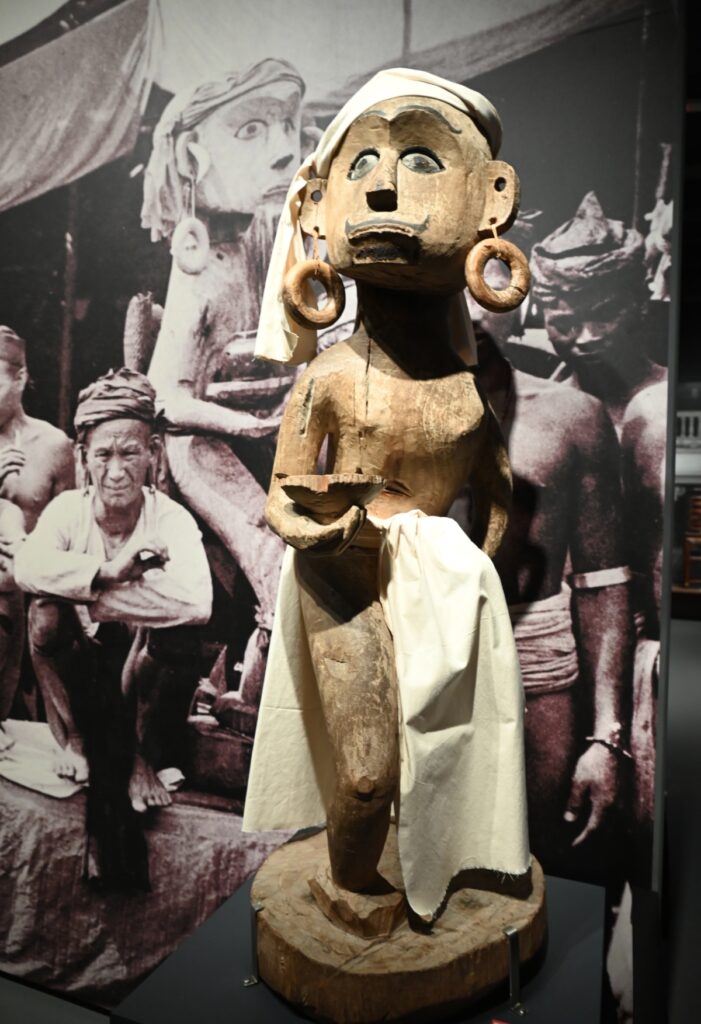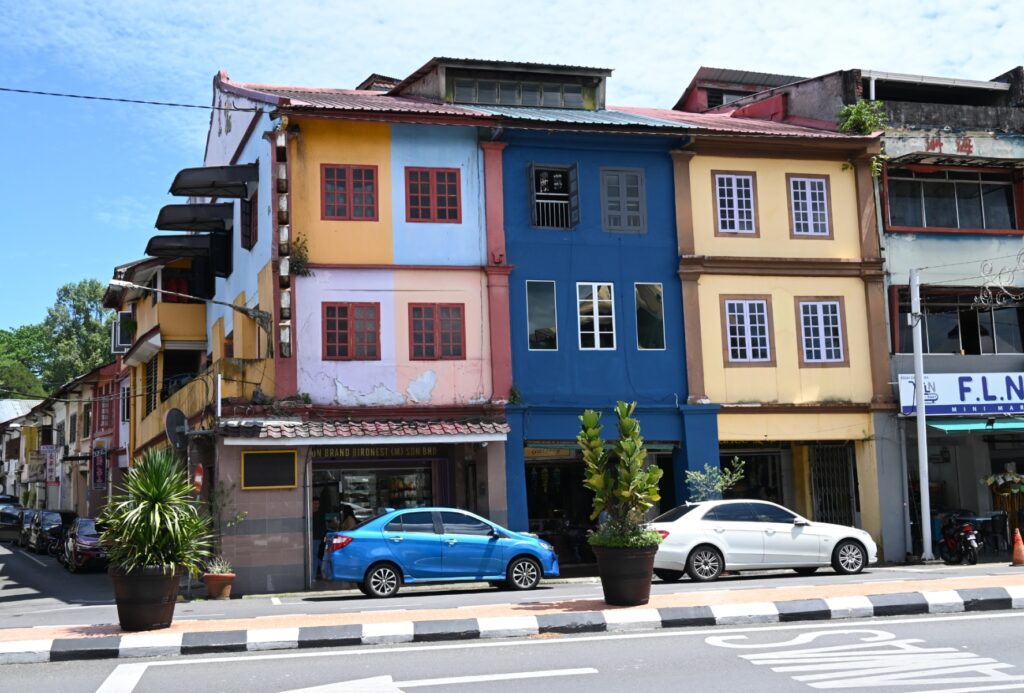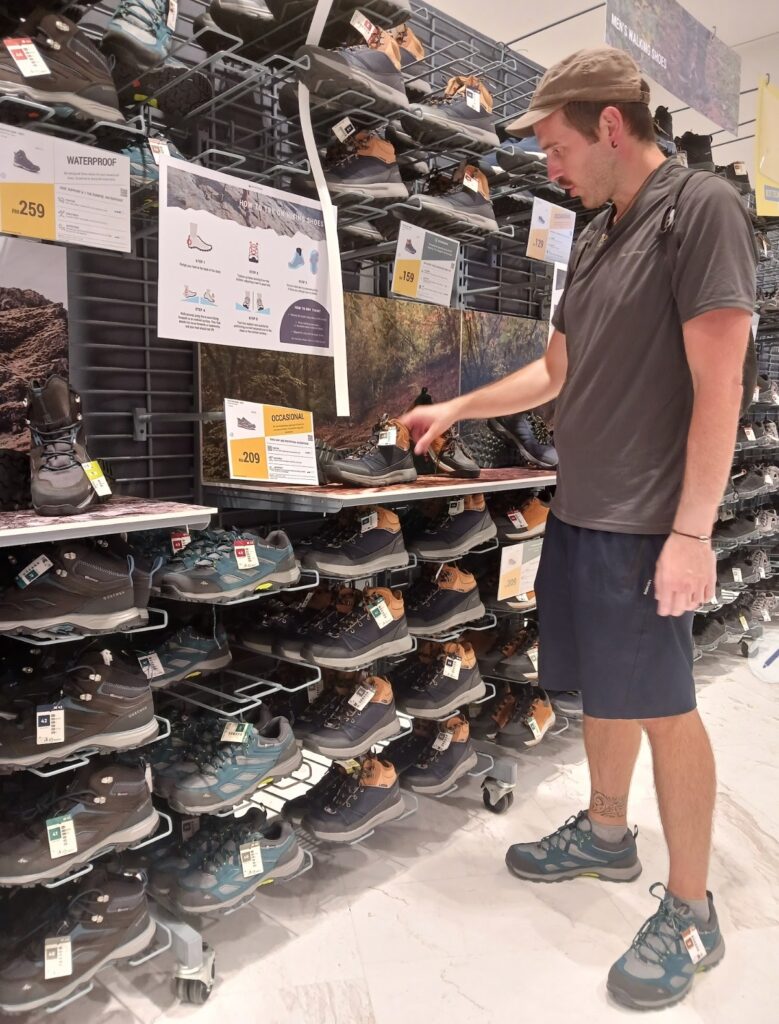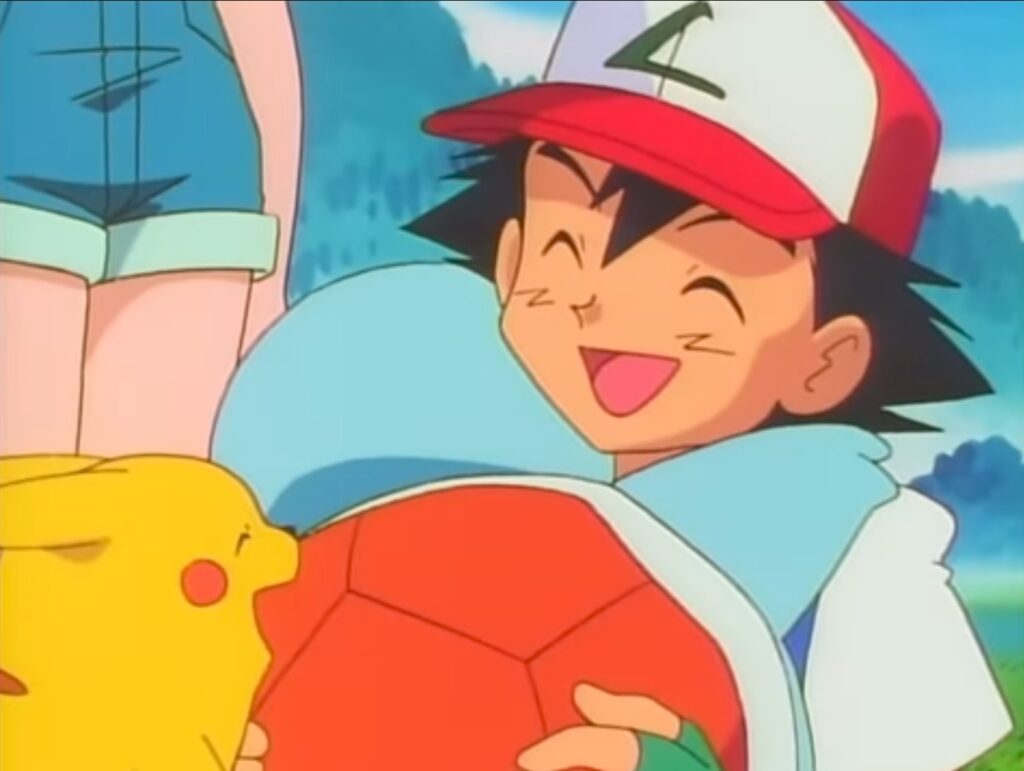The Hairy giraffe… IN MALAYSIA
Malaysia was the tenth destination of our world tour. We decided to visit two distinct places. We started with the island of Borneo, a tropical paradise filled with monkeys. We ended with Kuala Lumpur, a chaotic capital that did not charm us.
We will tell you all about this trip!
How long? We spent 7 days in Malaysia.
When? Mid-May. In Sarawak, on the island of Borneo, the climate is humid and hot, with rain showers never far away. By visiting in May, we ensure we avoid the winter monsoon season (Malaysia has two monsoon seasons), which lasts from November to March. We also steer clear of Malaysian and Singaporean holidays, which can attract many tourists to the national parks.
Ease of independent travel: 4 giraffes ![]() Borneo is well connected by air with the capital and several neighboring countries (Indonesia, Singapore, and Brunei). There are multiple daily flights between Kuching and Kuala Lumpur.
Borneo is well connected by air with the capital and several neighboring countries (Indonesia, Singapore, and Brunei). There are multiple daily flights between Kuching and Kuala Lumpur.
In Kuching, although buses are available, we opted to use Grab (the Uber of Asia) for transportation. In the city center, there are plenty of cars available and the fares are affordable. However, outside the city, the chances of finding a driver diminish significantly (except at the airport). For Semenggoh Nature Reserve, we asked our driver to wait for us during the two-hour visit to ensure we had transportation back. This waiting service is often offered by drivers as a standard option when you first get into the vehicle heading towards Semenggoh.
If getting to the embarkation pier for Bako National Park is straightforward with a bus or Grab, the return can be more complicated. There are no Grabs available near the pier, so you’ll need to return by bus or arrange for a taxi to be called for you.
Kuala Lumpur is not a pedestrian-friendly city, and you’ll quickly find yourself relying on Grab or the metro to move between neighborhoods.
Costs: 3 giraffes ![]() In Kuching, it’s possible to find accommodation with basic comforts like air conditioning at reasonable prices. Grab rides, restaurants, and food are also affordable. The entrance fees for national parks are reasonable. However, the Borneo Cultural Museum is considered expensive.
In Kuching, it’s possible to find accommodation with basic comforts like air conditioning at reasonable prices. Grab rides, restaurants, and food are also affordable. The entrance fees for national parks are reasonable. However, the Borneo Cultural Museum is considered expensive.
In Kuala Lumpur, prices are higher compared to Kuching. Grocery prices are notably expensive, with several food items priced similarly to or higher than in France, especially in central areas. Restaurants are also three times more expensive than those in Kuching.
Ease of communication: 5 giraffes ![]() The vast majority of Malaysians speak English, so there is no problem communicating in the language of Shakespeare.
The vast majority of Malaysians speak English, so there is no problem communicating in the language of Shakespeare.
Safety: 4 giraffes ![]() Some regions of the country pose a real danger to tourists. However, in Kuala Lumpur and even more so in Kuching, it is generally quiet. In the capital, there is a significant risk of snatch theft by thieves on bicycles or motorcycles.
Some regions of the country pose a real danger to tourists. However, in Kuala Lumpur and even more so in Kuching, it is generally quiet. In the capital, there is a significant risk of snatch theft by thieves on bicycles or motorcycles.
Pedestrians, be careful. In Malaysia, they drive on the left, and in Kuala Lumpur, you are rarely given priority.
Health: 4 giraffes ![]() The Malaysian healthcare system is considered one of the best in Asia. The availability of numerous specialists and relatively low costs make it a preferred destination for medical tourism.
The Malaysian healthcare system is considered one of the best in Asia. The availability of numerous specialists and relatively low costs make it a preferred destination for medical tourism.
The water is reportedly potable in Kuala Lumpur, although we chose not to take any risks.
Food hygiene standards can remain approximate, especially when moving away from major cities.
Gay friendly: 0 giraffe ![]() Absolutely no laws protect the LGBT community in Malaysia. The penalty for a same-sex relationship can go up to 20 years in prison. Penalties are also more severe for Muslims.
Absolutely no laws protect the LGBT community in Malaysia. The penalty for a same-sex relationship can go up to 20 years in prison. Penalties are also more severe for Muslims.
Conversion therapies are commonplace, and the government even promotes them.
Travel ease: 4 girafes ![]() The country’s modernity, the prevalence of English, ease of transportation, and the overall sense of safety (especially in Sarawak) make travel relatively straightforward. However, the excessive heat and humidity complicate daily life and should be considered, especially for individuals with respiratory issues or those who struggle in hot climates.
The country’s modernity, the prevalence of English, ease of transportation, and the overall sense of safety (especially in Sarawak) make travel relatively straightforward. However, the excessive heat and humidity complicate daily life and should be considered, especially for individuals with respiratory issues or those who struggle in hot climates.
Highlights: ![]() The natural parks of Borneo, home to endemic monkey species, and the kindness of the people of Sarawak
The natural parks of Borneo, home to endemic monkey species, and the kindness of the people of Sarawak
Letdowns: ![]() The omnipresent humidity and heat (not really disappointing, but it weighs on the overall travel experience), Kuala Lumpur as a whole
The omnipresent humidity and heat (not really disappointing, but it weighs on the overall travel experience), Kuala Lumpur as a whole
Check out our Travel Reflections articles on Malaysia:
ONE-WEEK ITINERARY IN MALAYSIA
Here is the detailed itinerary of our week in Malaysia:
J0 : We arrive in Kuching, on the island of Borneo, in the late evening after a 1.5-hour flight from Singapore.
J1 : We wake up early to go to the Semenggoh Wildlife Centre for its opening. This reserve rehabilitates injured orangutans or those seized by authorities from illegal owners. We will have the chance to witness the unofficial breakfast (food is provided to the orangutans in the morning and afternoon) and see eight orangutans, including males and females.



The experience is truly enjoyable despite the rain. The monkeys are very close (even too close when a male comes onto the observation platform with his coconut). There are also few tourists, and the guards provide a lot of interesting explanations. We spend just under two hours at the site.



Back at the hotel, we decide to take a stroll around the city. “Kuching” means “cat” in Malay, and indeed, there are cats everywhere.



The city is also charming and colorful. The walk along the waterfront remains pleasant despite the overcast weather.





Our steps lead us to the Borneo Cultural Museum. The entrance fee is quite expensive for the country (10€). Nevertheless, we have a great time there. The museum features a permanent exhibition on the peoples inhabiting the various ecosystems of Borneo (coastlines, tropical forests, and mountains). We learn more about their rituals and beliefs.






Another equally interesting part of the exhibition focuses on the history of Sarawak, the Malaysian state of which Kuching is the capital. We spend nearly 3 hours in the museum.
J2 : We are heading towards Bako National Park where we will spend the night.


In the park, it is possible to observe proboscis monkeys (these monkeys with big noses), endemic to the island of Borneo. The camp is located in the rainforest. As soon as we disembark from the boat, we are struck by the beauty of the scenery. The rocky cliffs stand out against the lush forest.




We are also greeted by a family of wild boars.


We spend the afternoon following the trails that wind through the forest.


The heat and strong sun cause the animals to stay hidden. However, we hear many cries, chirps, and buzzing noises confirming that we are not the only creatures present. One of the trails leads us back to the beach.






Nevertheless, we are fortunate to see our first proboscis monkey, a male, perched high up, busy eating leaves and flowers. Completely undisturbed by our presence, he goes about his life as if we weren’t there. Benjamin even narrowly avoids getting showered with monkey urine…



On a trail leading to a beautiful viewpoint overlooking the beach, we can observe carnivorous plants, some of which are nearly as large as an eggplant.




We finally arrive at the viewpoint in a state of advanced exhaustion…




We see Silvered leaf monkeys on the path leading back to the camp.



In the evening, we walk for two hours in the forest accompanied by guides and flashlights. It’s the perfect opportunity to see several nocturnal animals. We are quite lucky. We spot vipers, various insects, and birds, and startle at the slightest sound of branches cracking.




J3 : The night was short, not because of wildlife noises (unlike in the savanna where grazing zebras woke us up), as the animals in the rainforest are rather quiet until sunrise. Instead, it was due to the spartan comfort of our accommodation. The mattresses were so soft that they could fold in on themselves, and there was no air conditioning despite the persistent heat, making it difficult to sleep peacefully.

So, we are up very early and ready to go “hunting” for animals. Benjamin, who went out first, finds himself sandwiched by a troop of macaques. Meanwhile, François has his path blocked by a proboscis monkey that decides to pass in front of the lodge at the same time.


We follow the proboscis monkey as it stays close to the ground and heads towards the beach. We take several photos, but many turn out blurry. Monkeys move around a lot!
Later on, Benjamin encounters wildlife again: a family of wild boars blocks the path to the lodge, and the male seems determined not to let him pass.


We take advantage of the early hour to walk through the forest. We hear the macaques but don’t see any animals. Luckily, a guide we encounter points out a flying lemur clinging to a trunk just behind us. The nocturnal animal remains completely still and looks at us, seeming utterly terrified. We take a photo and leave it to calm its nerves.


We leave the park around 11:00 AM.


We return to Kuching in the early afternoon. We spend the afternoon walking along the waterfront, taking more photos in better sunlight, sending postcards, and shopping at local craft shops.




J4 : A 1.5-hour flight brings us to Kuala Lumpur, where we arrive around 1:00 PM. We eat at the airport before heading to our hotel, located near the Petronas Towers.



We go out shopping because, for the first time since the beginning of the trip, we have the opportunity to cook. This allows us to take a break from dining out at restaurants.

J5 : We sleep in at the hotel and then head out to see the Petronas Towers. Standing at 452 meters tall, they are the tallest twin towers in the world. While impressive on paper, in reality, they are not particularly spectacular. They are located in a district with numerous skyscrapers, which causes them to blend in with the surroundings. Similar to the Burj Khalifa, they also house a shopping mall.


We then walk to the Pavilion shopping mall. The stroll isn’t particularly interesting.
François takes the opportunity to buy a new pair of shoes. It’s time to say goodbye to his old, torn, and well-worn shoes.



François enjoys the hotel pool until he has to return to the room due to a thunderstorm.


J6 : We decide to go to the Batu Caves. There are two possible means of transportation: the metro or a Grab. The metro is inexpensive, but it takes over an hour and the journey is in a crowded, non-air-conditioned carriage, with a walk in 40-degree heat. The Grab, on the other hand, is more expensive (a few euros), takes 20 minutes, and is in an air-conditioned car that takes us directly to the entrance. The decision was a tough one…
The caves house the largest Hindu shrine outside of India. It is famous among tourists for its enormous golden statue of Murugan at the base of the colorful stairs leading to the cave entrance.

Despite the relatively early hour, there are already many devotees and also many monkeys. It suddenly brings back memories of our stay in India.



The cave is very beautiful, and the water dripping from the stalactites adds a wild aspect to the place. We simply find it unfortunate that the temples inside give the impression of being placed there rather than integrated into the rock walls.




It would have indeed been more beautiful to see temples built directly into the rock walls. It was also unfortunate to find litter on the site… We finish our tour of the site in about 30 minutes.
We take another Grab to Chinatown.



According to blogs, Chinatown is supposed to be of interest, but unfortunately, we don’t find anything appealing about it.



We quickly pass through it and return to the hotel.


J7 : Having toured Kuala Lumpur, we decide to stay at the hotel to work on the blog and enjoy watching Netflix on a TV. It might seem strange, but for over 5 months, we’ve been limited to a 20 cm screen…



We also take advantage of the pool with a view of the Petronas Towers.


It’s already the end of our adventure in Malaysia. We leave Kuala Lumpur happily, heading to Indonesia to continue our long journey.
Find all our other articles on Malaysia:




